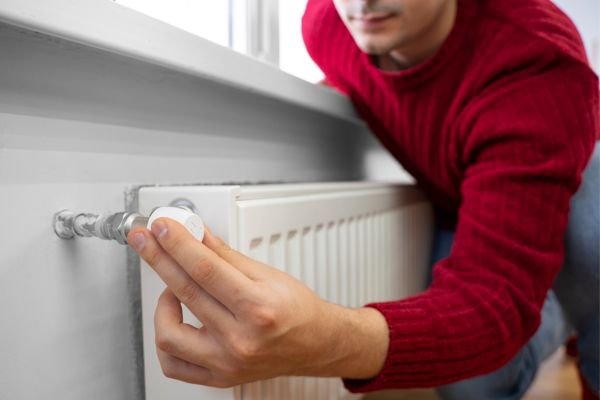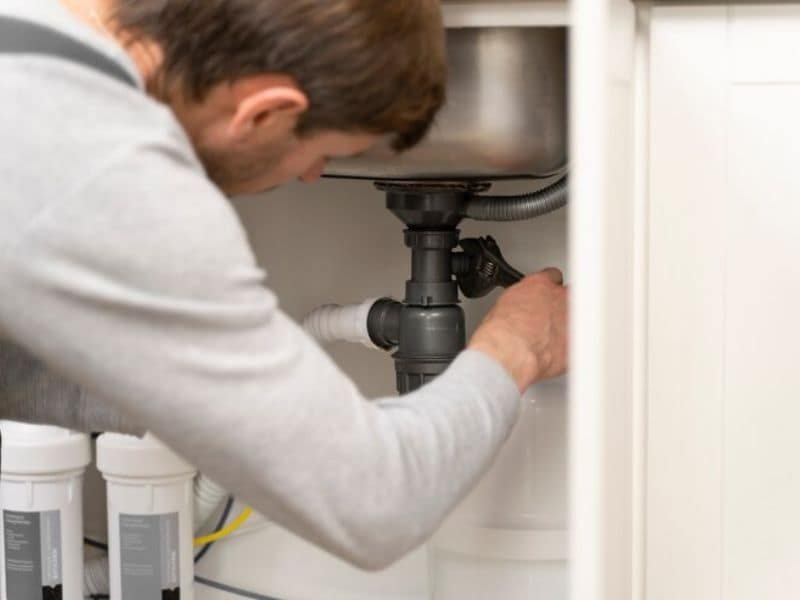Replacing a heating element in a water heater may sound like a job for the pros, but if you’re comfortable with basic tools and safety precautions, it’s a task you can take on yourself. Whether your hot water has suddenly stopped or you’ve noticed it’s just not as warm as it used to be, a faulty heating element could be the reason.
In this guide, we’ll walk you through everything you need to know—from tools and safety to the step-by-step installation process.

Understanding the Heating Element
Your water heater’s heating element is the component that literally makes the magic happen—it converts electrical energy into heat, warming the water inside your tank.
What a Heating Element Does
In most electric water heaters, there are two elements: one near the top and one near the bottom of the tank. These elements alternate heating cycles to maintain a consistent water temperature.
When one of these fails:
- Water may heat only partially
- You may run out of hot water quickly
- The unit may stop heating entirely
READ MORE: How to Install Heating Element in Water Heater
Signs Your Heating Element Needs Replacement
Not sure if your element is the problem? Here are some telltale signs:
- Water isn’t getting hot enough
- Breaker keeps tripping when the heater runs
- Heating takes longer than usual
- Water is warm but not hot
- Visible corrosion or burn marks (if you’ve removed the panel)
Testing with a multimeter can confirm whether the element has continuity. If it doesn’t, it’s time for a replacement.
Tools and Materials You’ll Need
Before diving into the replacement, gather all your tools. This will make the process smoother and safer.
Basic Tools Checklist
- Screwdrivers (flathead and Phillips)
- Socket wrench or element wrench
- Multimeter or continuity tester
- Garden hose (for draining tank)
- Bucket or towels (for spills)
- New heating element (correct size and wattage)
Recommended Safety Gear
- Work gloves
- Safety goggles
- Closed-toe shoes
- Voltage tester (to double-check power is off)
Having these items on hand will help you work efficiently and avoid accidents.
Safety First: Precautions Before Starting
Safety is your top priority. Water heaters combine electricity and water, which is never a combo to take lightly.
Turning Off Power and Water Supply
- Go to your electrical panel and flip the breaker marked “Water Heater” to OFF.
- Check with a voltage tester at the thermostat terminals to confirm there is no electricity.
- Shut off the cold water supply valve located at the top of the tank.
This prevents electric shock and stops water from entering the tank while you work.
Testing for Electrical Current
Using a multimeter:
- Set it to AC voltage
- Touch both leads to the two screws on the thermostat
- You should get a reading of 0 volts
If there’s still power, double-check your breaker. Only proceed once you’re sure the unit is de-energized.
READ MORE: How to Plumb a Basement Bathroom
Draining the Water Heater Tank
To avoid a soaking, you’ll need to empty the tank—or at least drain it below the element level.
How to Attach the Hose and Drain the Tank
- Connect a garden hose to the drain valve at the base of the tank.
- Run the other end to a floor drain or outside.
- Open a hot water faucet in the house to prevent vacuum lock.
- Twist open the drain valve and let the water flow.
Be cautious—the water inside may still be hot.
Tips to Prevent Mess or Injury
- Wait an hour or two after turning off the power to let water cool.
- Place towels or a shallow pan under the drain valve in case of leaks.
- Use a bucket if no nearby drain is available—but empty it frequently.
Locating and Removing the Faulty Heating Element
Now that the tank is drained and safe, you’re ready to access the bad element.
Finding the Access Panel
- Most heaters have metal panels covering the elements.
- Unscrew the panel and peel back any insulation.
- You’ll see two electrical wires connected to the element terminals.
Take a picture for reference before disconnecting anything!
Disconnecting the Wires and Unscrewing the Element
- Loosen the two screws holding the wires.
- Move the wires aside.
- Use a socket wrench or special element wrench to unscrew the element counterclockwise.
- If it’s stuck, gently tap the wrench with a rubber mallet.
Once removed, inspect the element for corrosion or cracks—confirming it’s the source of the issue.
Installing the New Heating Element
Now that the old heating element is out, it’s time to install the new one. This part is straightforward, but proper alignment and tight sealing are critical to prevent leaks and ensure proper function.
Types of Elements: Screw-in vs. Bolt-in
Most modern water heaters use screw-in elements, which require an element wrench. However, older models might have bolt-in elements, which use a flange and are secured by bolts.
- Screw-in elements: Most common; threaded base twists directly into the tank.
- Bolt-in elements: Older style; mounted with a gasket and held by four bolts.
Double-check the type before buying a replacement. Using the wrong style will either not fit or fail to seal correctly.
Fitting the New Element and Reconnecting Wires
- Insert the new element into the opening.
- Make sure the rubber gasket is properly seated to prevent leaks.
- Hand-tighten the element, then secure it firmly with the element wrench.
- Make sure the rubber gasket is properly seated to prevent leaks.
- Reconnect the electrical wires.
- Refer to the photo you took earlier.
- Attach each wire to the correct screw terminal and tighten securely.
- Make sure no wires are loose or frayed.
- Refer to the photo you took earlier.
Once everything is in place, reposition the insulation and reattach the access panel.
READ MORE: Do You Need a Permit to Install a Water Heater?
Refilling the Water Heater
Before you turn the power back on, you must completely refill the tank with water. Powering up an empty tank can instantly destroy the new element.
Closing the Drain Valve and Refilling Tank
- Close the drain valve at the base of the tank.
- Turn on the cold water supply valve at the top.
- Open a hot water tap (like in a sink or tub) to allow air to escape from the tank as it fills.
You’ll know the tank is full once the water runs smoothly from the faucet without sputtering.
Bleeding Air from the System
Air pockets can damage the system or cause noisy pipes. To bleed air:
- Leave the hot water tap running for several minutes.
- Let water flow until all air is purged and a strong stream returns.
- Then, close the tap.
Now your heater is full, and the system is pressurized.
Restoring Power and Testing Your Work
With the tank full and sealed, you’re ready to bring the heater back to life.
Turning the Breaker Back On
- Head to the electrical panel and switch the water heater breaker back to ON.
- Listen for a faint hissing or bubbling inside the tank—that’s the sound of the new element heating up.
Give the heater 30–60 minutes to fully reheat, depending on tank size.
Monitoring the Heater for Proper Operation
- After an hour, check your hot water tap.
- If the water is warm or hot, you’ve done everything right!
- Inspect the access panel area for leaks or drips around the element.
If you notice a leak, cut the power and tighten the element slightly, but don’t overdo it. Still leaking? The gasket might be misaligned and need repositioning.
Common Mistakes to Avoid
Even experienced DIYers sometimes overlook these simple—but costly—errors. Here’s what not to do:
Powering On Too Soon
This is the most common mistake. Turning on the power before the tank is full can “dry fire” the new element, burning it out in seconds.
Always ensure:
- Drain valve is closed
- Cold water supply is on
- Tank is fully filled before restoring power
Using the Wrong Wattage or Size
Elements vary in size (commonly 6, 12, or 14 inches) and wattage (usually 3500W, 4500W, or 5500W).
- Using an incorrect wattage can overheat the tank or trip the breaker.
- Using the wrong length may lead to inconsistent heating or poor performance.
Always check your water heater’s label for correct specifications—or take the old element with you when buying a new one.
READ MORE: Why Is My Hot Water Heater Not Working?
When to Call a Professional
Replacing a heating element is often a simple task—but some issues are better left to the pros.
Issues That May Require Expert Help
- You suspect internal tank damage
- There are signs of extensive corrosion
- Breaker keeps tripping after replacement
- Water still won’t heat despite installing a new element
These problems may point to electrical faults, failed thermostats, or a dying water heater.
Warning Signs of Bigger Problems
Watch for:
- Leaks from the tank shell
- Rusty or foul-smelling water
- Visible damage to wiring or controls
In these cases, calling a licensed plumber or electrician can save time, money, and avoid safety risks.
Maintenance Tips for a Longer-Lasting Heating Element
Once your new element is up and running, a little care goes a long way.
Flushing the Tank Regularly
Sediment is a major enemy of heating elements. It acts as insulation, making the element work harder and wear out faster.
- Flush your tank every 6–12 months
- Attach a hose to the drain valve and let it run clear
- This helps remove minerals and extends the life of your unit
Checking for Sediment and Corrosion
If your area has hard water:
- Consider installing a whole-house water softener
- Inspect the anode rod every 2–3 years and replace if corroded
- Keep an eye on the T&P valve for leaks or blockage
A little routine maintenance helps you avoid emergency repairs and keep your hot water flowing reliably.
Conclusion
Installing a new heating element in your water heater doesn’t have to be complicated. With a few tools, the right replacement part, and a bit of patience, you can save on labor costs and get your hot water running again in just a couple of hours.
Remember: always prioritize safety, double-check power is off, and make sure the tank is full before restoring electricity. If done right, your new element should deliver years of steady performance.
FAQs
1. How long does it take to replace a heating element?
About 1–2 hours including draining the tank and refilling it. If you’re familiar with tools, the process is even quicker.
2. Can I replace the element without draining the tank?
Not safely. You need to lower the water level below the element. Attempting removal while full risks flooding and injury.
3. What if my new element still doesn’t heat water?
Check the breaker, thermostat, and wiring. The issue may not be the element but a faulty thermostat or power supply.
4. Are heating elements universal?
No. They vary by length, wattage, and mounting type. Always match the specifications from your current unit.
5. How do I know which element to buy?
Look at the label on your heater or take the old element to the store. Match wattage, voltage, and type (screw-in or bolt-in).

